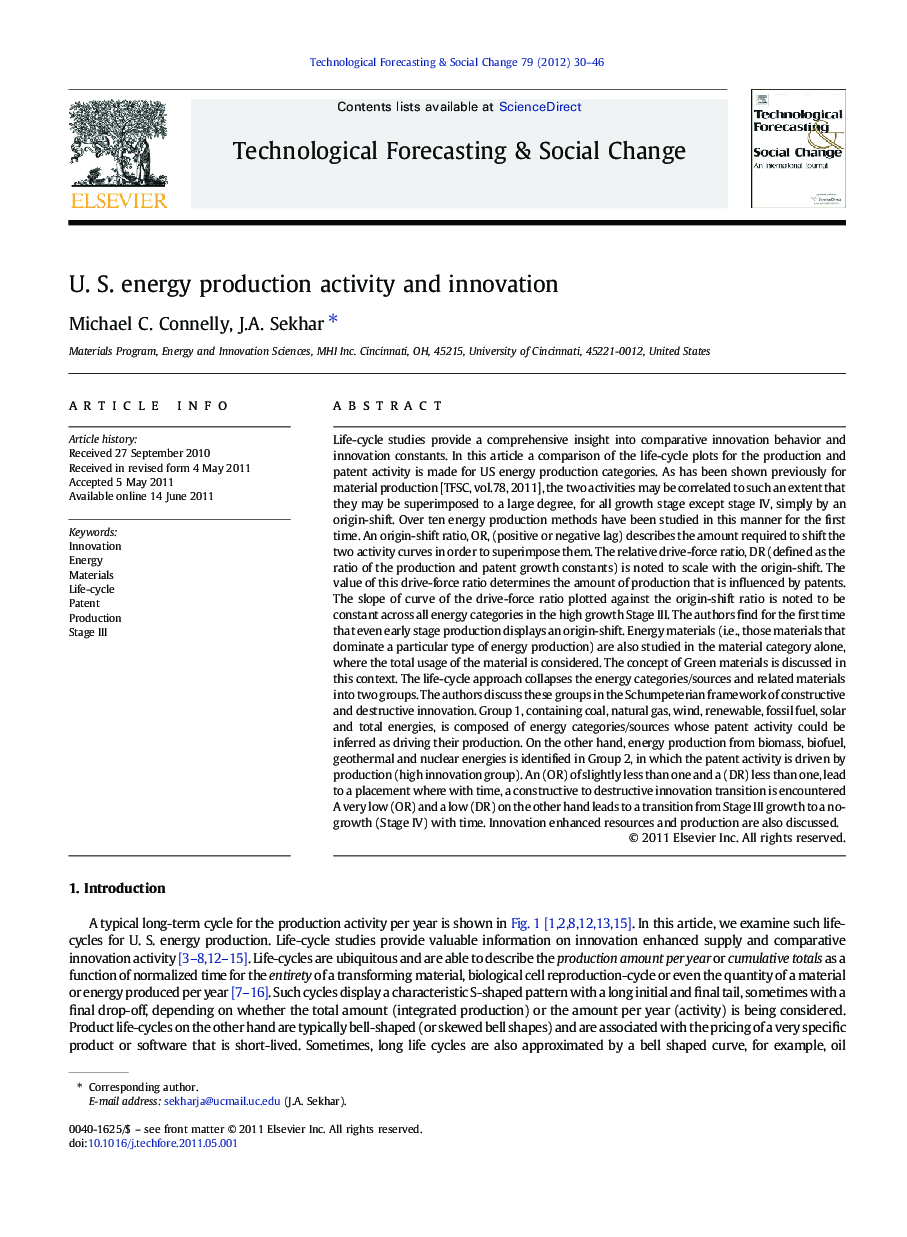| کد مقاله | کد نشریه | سال انتشار | مقاله انگلیسی | نسخه تمام متن |
|---|---|---|---|---|
| 896803 | 914860 | 2012 | 17 صفحه PDF | دانلود رایگان |

Life-cycle studies provide a comprehensive insight into comparative innovation behavior and innovation constants. In this article a comparison of the life-cycle plots for the production and patent activity is made for US energy production categories. As has been shown previously for material production [TFSC, vol.78, 2011], the two activities may be correlated to such an extent that they may be superimposed to a large degree, for all growth stage except stage IV, simply by an origin-shift. Over ten energy production methods have been studied in this manner for the first time. An origin-shift ratio, OR, (positive or negative lag) describes the amount required to shift the two activity curves in order to superimpose them. The relative drive-force ratio, DR (defined as the ratio of the production and patent growth constants) is noted to scale with the origin-shift. The value of this drive-force ratio determines the amount of production that is influenced by patents. The slope of curve of the drive-force ratio plotted against the origin-shift ratio is noted to be constant across all energy categories in the high growth Stage III. The authors find for the first time that even early stage production displays an origin-shift. Energy materials (i.e., those materials that dominate a particular type of energy production) are also studied in the material category alone, where the total usage of the material is considered. The concept of Green materials is discussed in this context. The life-cycle approach collapses the energy categories/sources and related materials into two groups. The authors discuss these groups in the Schumpeterian framework of constructive and destructive innovation. Group 1, containing coal, natural gas, wind, renewable, fossil fuel, solar and total energies, is composed of energy categories/sources whose patent activity could be inferred as driving their production. On the other hand, energy production from biomass, biofuel, geothermal and nuclear energies is identified in Group 2, in which the patent activity is driven by production (high innovation group). An (OR) of slightly less than one and a (DR) less than one, lead to a placement where with time, a constructive to destructive innovation transition is encountered A very low (OR) and a low (DR) on the other hand leads to a transition from Stage III growth to a no-growth (Stage IV) with time. Innovation enhanced resources and production are also discussed.
► This article deals with U.S. data for energy categories and energy materials.
► The Invention to Innovation four life-cycle stages are also found to exist for energy categories.
► The dual nature of Schumpeterian innovation concepts is quantitatively described.
► Innovation enhanced supply is related to the Origin Ratio for assessing the impact of patents during the Stage III (high growth) life. Green Energy and Green Materials are correlated and studied.
Journal: Technological Forecasting and Social Change - Volume 79, Issue 1, January 2012, Pages 30–46